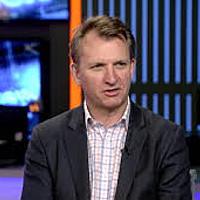Has the gold rally run too far?
Gold has played out better than we expected on the LONG side. We closed our LONG earlier this year (April), having been in the trade since September last year. It’s now become a consensus LONG in the markets (with sentiment above its +1 standard deviation level on the bullish side) and we’re looking to start moving SHORT again over coming weeks.
Our thinking is predicated on the thesis that gold is driven by three key factors. Those three are:
- TIPS (Treasury Inflation-Protected Securities) yields;
- Fed funds expectations; and
- The direction of the USD.
Incidentally those three factors encapsulate the traditional view that the drivers of gold are either inflation, deflation or its value as a safe haven.
Often those three key factors move in tandem, given that they are largely related. At times, though, they move in opposite directions and one or two of the factors are more dominant with respect to driving gold prices. In recent months, the fed funds expectations have been one of the key drivers of the gold price, along with TIPS yields. The correlation with the dollar has been lower.
Our sense of the global macro situation, though, is that aggressive stimulus has been discussed and increasingly priced into global markets in recent weeks. That’s evident from the sharp, somewhat panicky, fall in global sovereign bond yields, by the movement in interest rate expectations as well as by the actual actions and messaging of central banks, and other policy makers, globally. Over the past several weeks, central banks and fiscal policy makers across the globe have come out with promises of more stimulus. The German government has hinted of a €50billion fiscal package; Trump mentioned, and then rolled back on, the idea of a payroll tax; the ECB, using Ollie Rehn and the WSJ as a mouthpiece, used an article on 15th August to discuss its ‘big bazooka’ of monetary stimulus, even mentioning looking into the idea of buying equities with newly printed money, while the New Zealand and Indian central banks have both surprised positively with larger than expected rate cuts.
All the while, there is strong evidence that the global economy is not as weak as bond yields and market chatter might suggest. Yes there has been a marked downturn in the global trade and industrial cycle but, at this point in time, there’s no evidence to suggest that that slowdown is anything more than a mini cycle slowdown which the global economy regularly goes through. The last one was in 2015 into 2016, prior to that it was triggered by the Euro crisis. Always, though, these episodes are accompanied by inventory build-up in the quarters running up to the mini cycle growth peak, and then destocking as excess inventory is run down. The chart below illustrates that process for the US economy using the ISM manufacturing sub indices. To date this looks like a classic mini cycle slowdown similar to the last two occurrences but accentuated by the anticipation of, and aftermath following, the initial major tariffs round in September last year.
ISM manufacturing inventories & new orders (both 6m smoothed)

Interestingly what determines whether this is a ‘mini cycle slowdown or something more sinister’ is whether or not the preconditions are in place for a recession, in particular in the US. Currently, similar to the last two mini cycles, this is not the case. An assessment of our six categories of recession indicators highlights that while risks are rising and some indicators are troubling, the overall message from across the breadth of those indicators is an ‘all clear’ message (i.e. recession is a ‘lowish’ risk in the near term). The surplus free cashflow being currently generated by the US corporate sector is a case in point. All post WWII US recessions have been preceded by a corporate sector which has been running a significant cashflow deficit, while none have occurred when a surplus is being generated.
As such we expect that mini cycle re-acceleration to occur, aided by forthcoming stimulus, which the bond and interest rate market has more than priced.
With respect to gold, therefore, and as the markets start to price out some of that stimulus and begins to focus on the mini cycle re-acceleration, then the gold price should come under pressure (as fed funds expectations, and TIPS yields adjust).
As such the SHORT gold trade is increasingly attractive at this moment in time, and could potentially have a considerable distance to run.
1 topic

